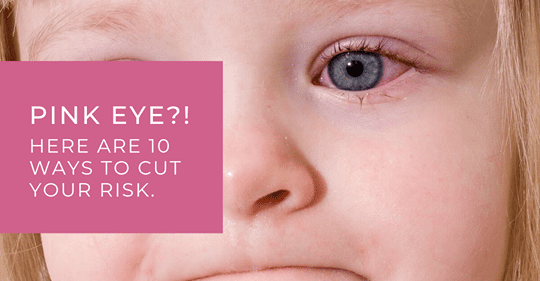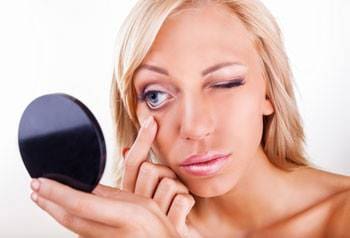What can you do to protect yourself and your kids from getting pink eye (conjunctivitis)?
Here are 10 precautions you can take to significantly reduce your risk of getting pink eye:
1. Never share personal items such as washcloths, hand towels or tissues.
2. Cover your nose and mouth when coughing or sneezing.
3. Avoid rubbing or touching your eyes.
4. Wash your hands frequently, especially when spending time at school or in other public places.
5. Keep a hand sanitizer nearby and use it often.
6. Frequently clean surfaces such as countertops, bathroom surfaces, faucet handles and shared phones with an antiseptic cleaner.
7. If you suffer from seasonal allergies, ask your eye doctor what can be done to minimize your symptoms before they begin.
8. If you wear contact lenses, follow your eye doctor’s instructions for lens care and replacement, and use contact lens solutions properly or consider switching to daily disposable contact lenses.
9. Wear goggles when swimming to protect yourself from bacteria and other microorganisms in the water that can cause conjunctivitis.
10. Before showering, remove your contact lenses to avoid trapping bacteria between your eyes and the lenses.
Despite these precautions, you or your child still may develop pink eye. See an EYE Doctor as soon as the eye looks pink for an accurate diagnosis. A red or pink eye sometimes can sometimes be a sign of a serious eye problem.
If your child has conjunctivitis, tell his or her teacher about the infection so extra steps can be taken to sanitize the classroom or day care center. Also, keep your child home until the contagious stage has passed. Pink eye usually lasts about 3-5 days.






